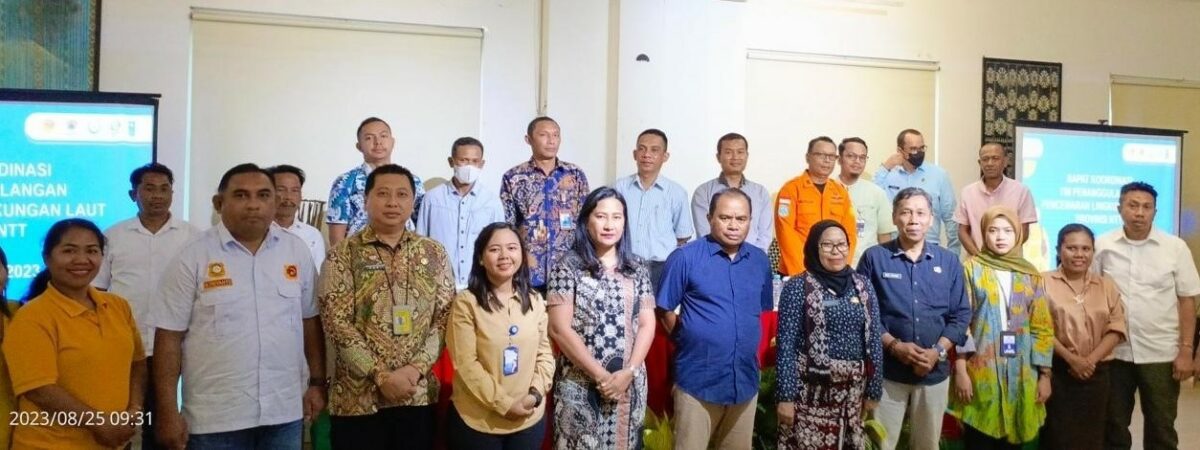The waters surrounding Rote Ndao in East Nusa Tenggara (NTT) Province are increasingly at risk from pollution, due to a combination of oil and gas exploration and maritime traffic. Pollution associated with these issues can have a devastating impact on marine organisms, while also impacting coastal ecosystems and the local communities who rely on natural resources for their livelihoods.
In an effort to safeguard the marine environment, the Secretariat of the Marine Pollution Task Force in NTT Province, with support from the ATSEA-2 Project, organised a regional coordination meeting on 25 August 2023. This meeting set out to develop the 2023-2024 Action Plan, with an emphasis on creating an early warning system that could mitigate the impacts of future oil spills in the region.
The meeting brought together 58 members of the Marine Pollution Task Force in NTT Province. Comprising 39 men and 19 women, this group of meeting attendees also collectively represented 23 institutions at both the provincial and national levels. The meeting served as an opportunity, not only to discuss the upcoming action plan, but to review the success of its predecessor, the 2022-2023 Action Plan.

The meeting began with an opening address by Rudi Lismono, Head of the Development Division at the NTT Provincial Environment and Forestry Office. In his remarks, he emphasised the importance of creating a plan that would work in practice. He highlighted that this coordination meeting provided the ideal platform for team members to collaborate and devise the most effective action plan.
Sulastri H. I. Rasyid, the Head of the NTT Provincial Maritime and Fisheries Office, who also serves as the Deputy Chief Executive of the Marine Pollution Task Force in NTT Province, presented the outcomes of the 2022-2023 Action Plan and posited a number of suggestions for its successor, the 2023-2024 Action Plan. During her presentation, she confirmed that all activities scheduled for the 2022-2023 period had been successfully carried out. She also highlighted the active participation of task force team members and their role in the implementation process.
Activities in the previous plan included simulating an early warning system in Rote Ndao District. The team also conducted training on oil spill modelling at sea, monitored and sampled oil spills, and employed techniques for cleaning and assessing coastlines affected by oil spills. The ATSEA-2 Project was instrumental in providing funding support and expertise for these training sessions and the development of guidelines. One significant challenge faced by the team was limitations in funding support from the provincial government; to address this challenge and achieve better outcomes, the team utilised the funding available from the ATSEA-2 Project in order to support their efforts to combat marine pollution.
The above actions constituted part of the detailed implementation of five out of six objectives and 24 activities aimed at combating marine pollution in NTT Province, covering a period from 2021 to 2023. The Government of NTT Province, in collaboration with the Legal Bureau, continues to work on the sixth objective, which focuses on enhancing regulations concerning marine pollution control activities within the province.
During the meeting, team members were divided into several working groups, which discussed the 2023-2024 action plan and relevant programs for combating marine pollution in NTT Province. Working groups proposed measures that included regulations for preparedness, expanding the oil spill early warning system, conducting rapid response simulations, organising biannual pollution mitigation webinars and providing oil pollution response training across all 22 districts in NTT Province. These inputs were then summarised and documented in the minutes of the meeting, which were signed by all participants.
The finalised 2023-2024 Action Plan will be presented to the Chairperson of the Marine Pollution Task Force in the first week of October 2023. The ultimate goal is for the NTT Provincial Government to independently implement all proposed activities outlined therein. This self-reliance is particularly crucial, as additional support from the ATSEA-2 Project is nearing its conclusion.
By Khaifin


